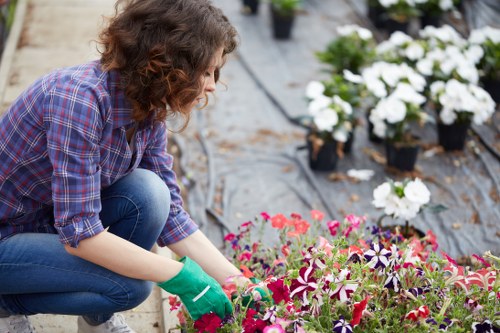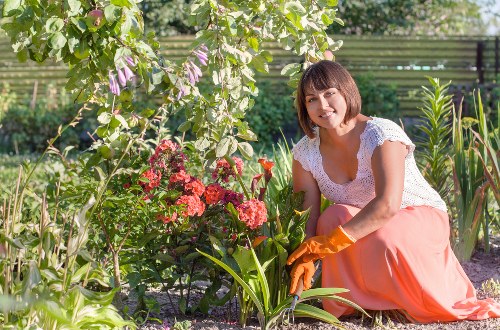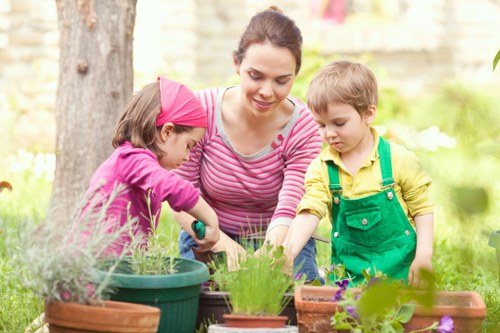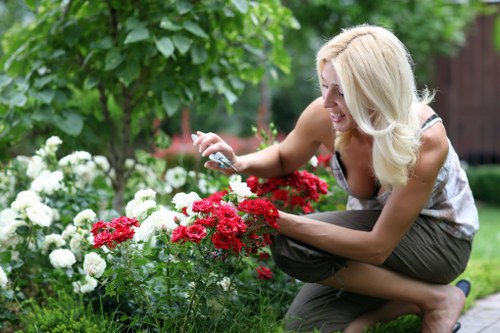Garden Maintenance in Teddington

Maintaining a garden in Teddington requires a blend of passion, expertise, and understanding of the local climate. Whether you are a seasoned gardener or a beginner, keeping your garden in pristine condition involves regular care and attention to detail. This comprehensive guide provides you with essential tips and strategies for effective garden maintenance in Teddington.
From selecting the right plants to seasonal upkeep, our goal is to help you cultivate a beautiful and sustainable garden. By following these guidelines, you can ensure your outdoor space remains vibrant and healthy all year round.
Let’s delve into the various aspects of garden maintenance that will transform your Teddington garden into a lush oasis.

Understanding the Teddington Climate
Teddington enjoys a temperate maritime climate, characterized by mild winters and warm summers. This climate is conducive to a wide variety of plants, but it also presents unique challenges that gardeners must navigate.
Key climatic factors to consider include:
- Temperature variations: Understanding the seasonal temperature changes helps in selecting appropriate plant species.
- Rainfall patterns: Adequate drainage is essential to prevent waterlogging, especially during the wetter months.
- Wind exposure: Protecting plants from strong winds can prevent damage and promote healthy growth.
By tailoring your maintenance practices to these climatic conditions, you can enhance the resilience and beauty of your garden.

Essential Garden Maintenance Tips
Regular Weeding
Weeds compete with your desired plants for nutrients, water, and light. Regular weeding is crucial to maintain the health and aesthetics of your garden.
- Use hand weeding techniques for precision.
- Apply mulch to suppress weed growth.
- Consider weed control fabrics for larger areas.
Pruning and Trimming
Pruning helps in shaping plants, promoting airflow, and encouraging new growth. It also removes dead or diseased branches that can weaken plants.
- Prune roses in early spring.
- Trim shrubs after flowering.
- Maintain trees by removing any crossing branches.
Watering Techniques
Proper watering is vital for plant health. Overwatering can lead to root rot, while underwatering can cause plants to wilt and die.
- Water early in the morning to reduce evaporation.
- Use drip irrigation systems for efficient water use.
- Check soil moisture regularly to adjust your watering schedule.

Seasonal Garden Care
Spring Maintenance
Spring is the time for rejuvenating your garden after the winter months. Focus on tasks that prepare your garden for the growing season.
- Clear out any winter debris and fallen leaves.
- Apply a fresh layer of compost to enrich the soil.
- Plant spring bulbs such as tulips and daffodils.
Summer Upkeep
During the summer, gardens require consistent care to cope with the heat and increased sunlight.
- Mulch around plants to retain moisture.
- Monitor for pests and apply organic treatments if necessary.
- Deadhead flowers regularly to encourage continuous blooming.
Autumn Preparation
Autumn is essential for preparing your garden for the colder months. This season focuses on protecting plants and enhancing soil health.
- Rake fallen leaves and incorporate them into the soil.
- Prune perennials and remove any damaged stems.
- Plant spring crops such as garlic and onions.
Winter Care
Winter may seem inactive, but it’s a critical period for setting the stage for the next year. Proper winter care ensures your garden’s longevity.
- Protect sensitive plants with frost covers.
- Store garden tools in a dry place to prevent rust.
- Plan and design your garden layout for the upcoming seasons.

Choosing the Right Plants for Teddington
Selecting plants that thrive in Teddington’s climate is fundamental to successful garden maintenance. Consider the following categories when choosing your plants:
Perennials
Perennials return year after year, providing long-term color and structure to your garden.
- Roses
- Lavender
- Hostas
Annuals
Annuals offer vibrant seasonal blooms but need to be replanted each year.
- Pansies
- Marigolds
- Petunias
Shrubs and Trees
Shrubs and trees add height and form, serving as focal points in the garden.
- Hydrangeas
- Boxwood
- Japanese Maples
Vegetable and Herb Gardens
Growing your own vegetables and herbs not only beautifies your garden but also provides fresh produce.
- Tomatoes
- Basil
- Carrots
By carefully selecting plants suited to the Teddington environment, you can create a diverse and thriving garden.
Soil Health and Fertilization
Healthy soil is the foundation of a successful garden. It provides essential nutrients and support for plant roots.
Soil Testing
Conducting a soil test helps determine the pH level and nutrient content, allowing you to amend the soil appropriately.
- Test soil pH to ensure it matches the requirements of your plants.
- Check for deficiencies in key nutrients like nitrogen, phosphorus, and potassium.
- Adjust soil composition based on test results.
Amending the Soil
Depending on the soil test results, you may need to add organic matter or specific fertilizers to improve soil quality.
- Incorporate compost to enhance fertility.
- Add lime to raise pH or sulfur to lower it.
- Use balanced fertilizers to supply essential nutrients.
Mulching
Mulching conserves moisture, suppresses weeds, and regulates soil temperature.
- Apply a 2-3 inch layer of organic mulch around plants.
- Use materials like bark, straw, or leaves.
- Replenish mulch as needed to maintain its effectiveness.
Composting
Creating a compost pile recycles garden waste and kitchen scraps into valuable soil amendments.
- Combine green materials (e.g., vegetable scraps) with brown materials (e.g., dried leaves).
- Turn the compost regularly to aerate and speed up decomposition.
- Use finished compost to enrich garden beds and improve soil structure.
Pest and Disease Management
Protecting your garden from pests and diseases is crucial for maintaining plant health and vitality.
Identifying Pests
Early identification of pests allows for prompt and effective treatment.
- Inspect plants regularly for signs of damage.
- Look for specific indicators like discolored leaves or visible insects.
- Use pest identification guides or consult local experts if unsure.
Organic Pest Control
Utilizing organic methods minimizes harm to beneficial insects and the environment.
- Introduce natural predators like ladybugs and praying mantises.
- Use neem oil or insecticidal soap to treat infestations.
- Implement physical barriers such as row covers to protect plants.
Disease Prevention
Preventing plant diseases involves proper sanitation and care practices.
- Remove and destroy infected plant parts to prevent spread.
- Ensure adequate spacing for airflow around plants.
- Water plants at the base to keep foliage dry.
Integrated Pest Management (IPM)
IPM combines various strategies to manage pests sustainably.
- Monitor pest populations and assess damage levels.
- Employ biological, cultural, and mechanical control methods.
- Use chemical controls as a last resort, opting for least toxic options.
By proactively managing pests and diseases, you can maintain a healthy and thriving garden.
Professional Garden Maintenance Services
While DIY garden maintenance is rewarding, professional services can offer expertise and efficiency, especially for larger or more complex gardens.
Benefits of Hiring Professionals
- Expert knowledge of local plants and climate conditions.
- Access to specialized tools and equipment.
- Time-saving, allowing you to enjoy your garden without the hassle.
Services Offered
- Lawn Care: Mowing, aeration, and fertilization.
- Pruning and Trimming: Ensuring plants are healthy and well-shaped.
- Planting and Landscaping: Designing and implementing garden layouts.
- Pest and Disease Control: Managing and preventing infestations.
Choosing the Right Service Provider
Selecting a reputable garden maintenance company in Teddington ensures quality and reliability.
- Check for certifications and licenses.
- Read reviews and seek recommendations from neighbors.
- Compare pricing and service packages to find the best fit for your needs.
Investing in professional services can elevate the maintenance and appearance of your garden, providing peace of mind and a beautiful outdoor space.
Contact us today
Sustainable Gardening Practices
Embracing sustainable gardening not only benefits the environment but also promotes a healthier and more resilient garden.
Water Conservation
Implementing water-saving techniques ensures that your garden thrives without excessive water use.
- Install rainwater harvesting systems to collect and reuse rainwater.
- Use mulch to reduce evaporation and retain soil moisture.
- Opt for drought-resistant plants that require less water.
Composting and Recycling
Recycling organic waste enhances soil fertility and reduces landfill contributions.
- Create a compost bin to recycle kitchen and garden waste.
- Use recycled materials for garden pathways and structures.
- Recycle plant containers and repurpose them creatively in your garden.
Encouraging Biodiversity
A diverse garden supports a wide range of wildlife, promoting a balanced ecosystem.
- Plant native species that provide habitat and food for local fauna.
- Incorporate pollinator-friendly plants to attract bees, butterflies, and other beneficial insects.
- Create habitats such as birdhouses and insect hotels to support wildlife.
Reducing Chemical Usage
Minimizing the use of chemicals fosters a healthier garden environment.
- Use organic fertilizers to nourish plants naturally.
- Implement biological pest control methods instead of chemical pesticides.
- Choose natural repellents for managing unwanted pests.
By adopting sustainable practices, you contribute to the well-being of your garden and the broader ecosystem.
